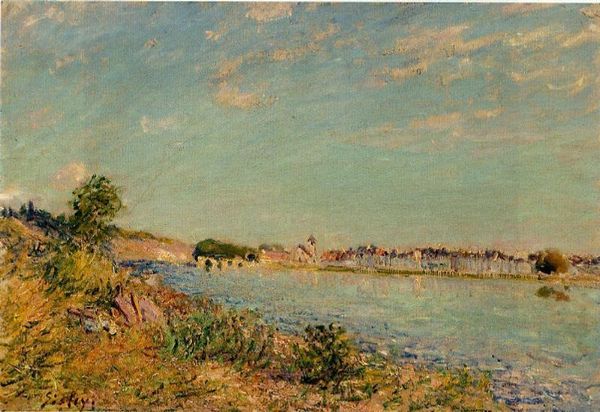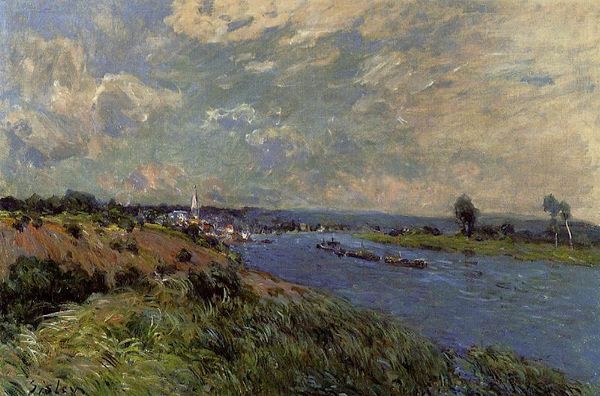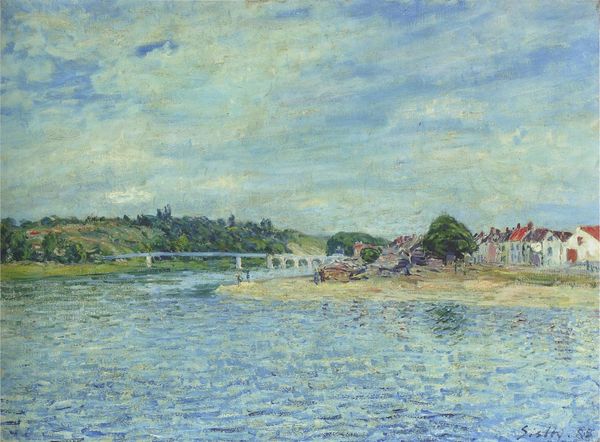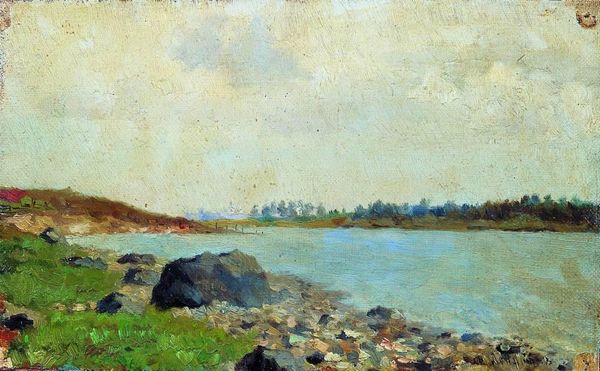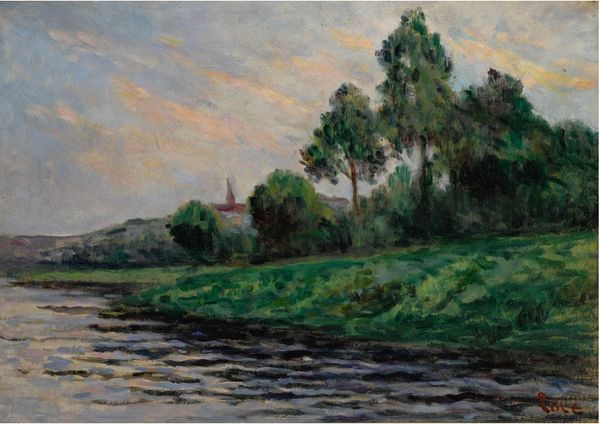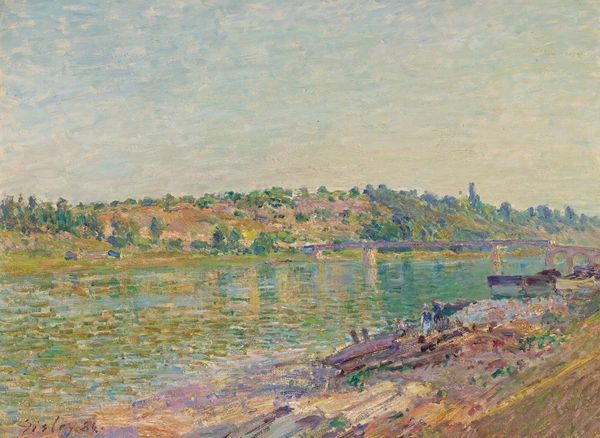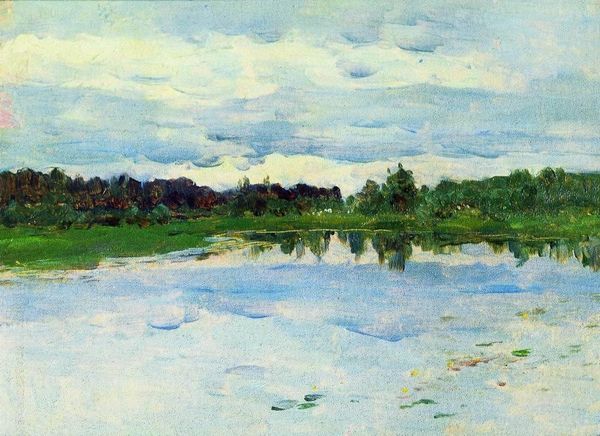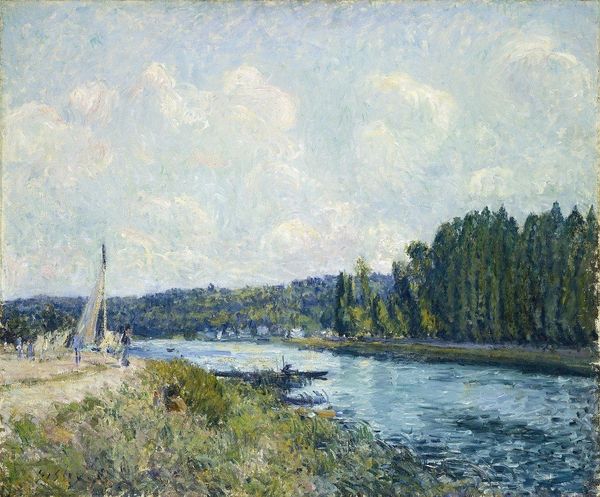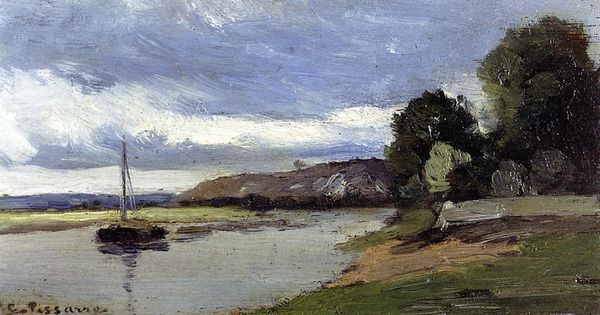
Copyright: Public domain
Isaac Levitan made "Plyos" with oil on canvas, and the way he handled this traditional medium really invites us to think about his process. Levitan's brushstrokes aren't just descriptive; they're expressive. Look closely, and you'll see how he builds up the landscape with layers of paint, capturing the textures of the land and the way light plays on the water. It’s a physical process, almost like sculpting with pigment, and that brings a real sense of immediacy to the image. Paintings like this were, of course, enabled by the industrial production of art supplies. Tubes of premixed colors allowed artists to work en plein air, directly in response to the landscape. Yet there's nothing mechanical about Levitan's application. His personal touch is evident in every stroke, connecting him to a longer lineage of landscape painters, while also marking him as an individual. Ultimately, "Plyos" demonstrates that even within a tradition, it’s the artist’s hand – their way of working with the material – that gives a work its unique power. It blurs boundaries, intertwining the industrial with the personal, and craft with fine art.
Comments
No comments
Be the first to comment and join the conversation on the ultimate creative platform.
